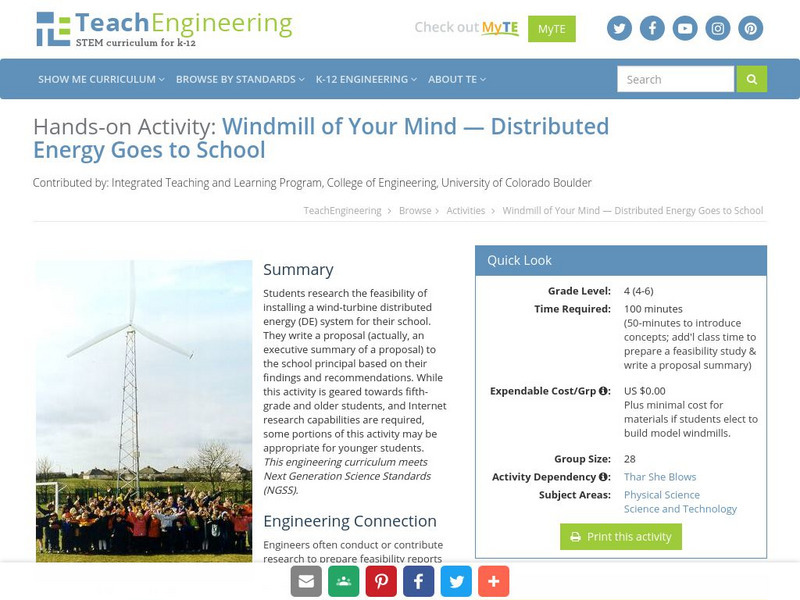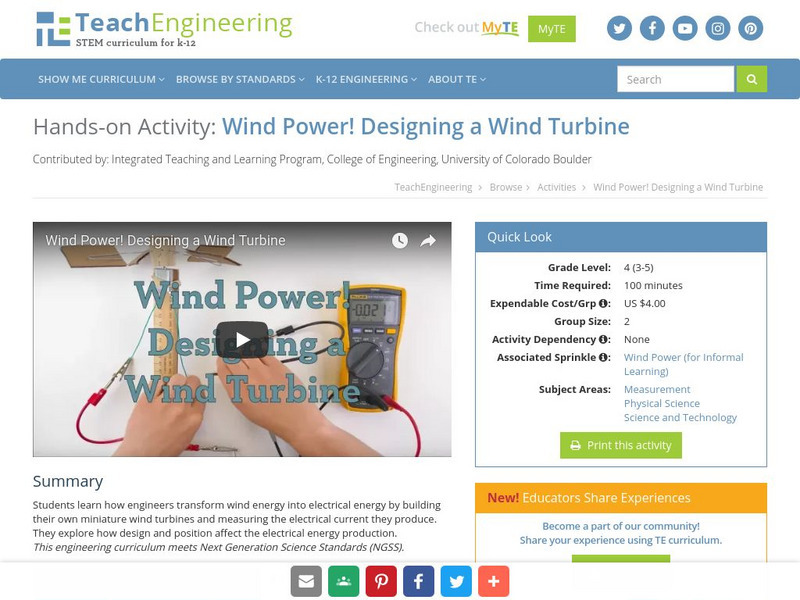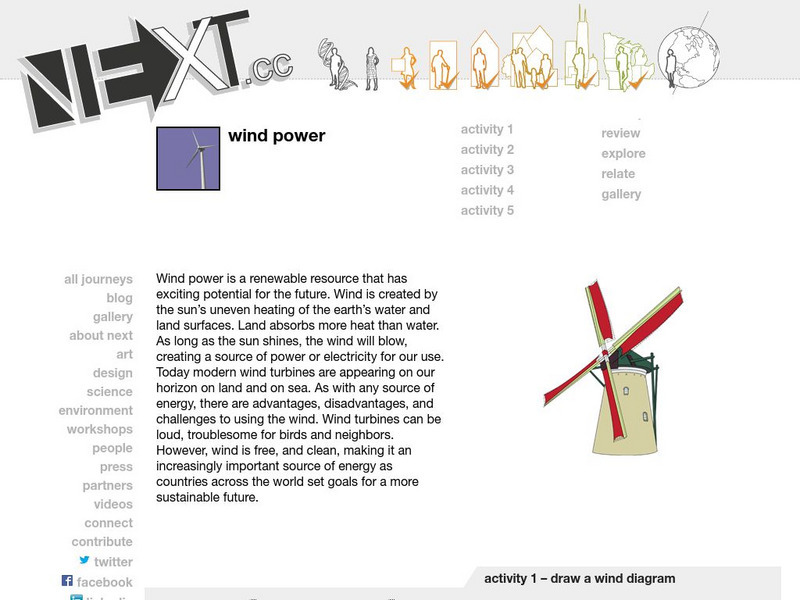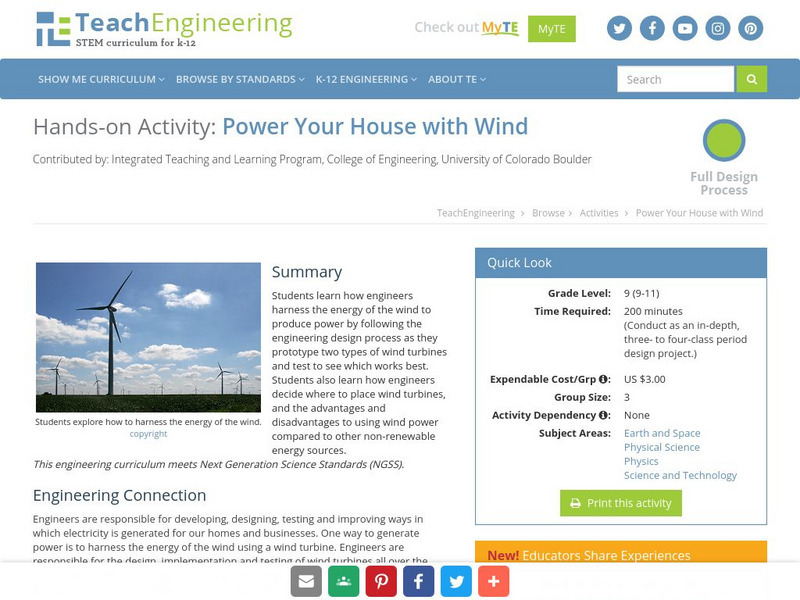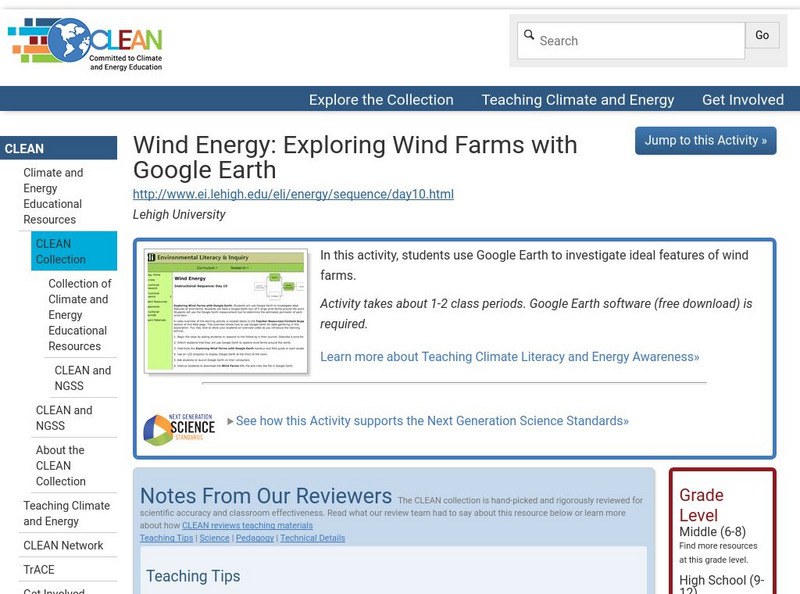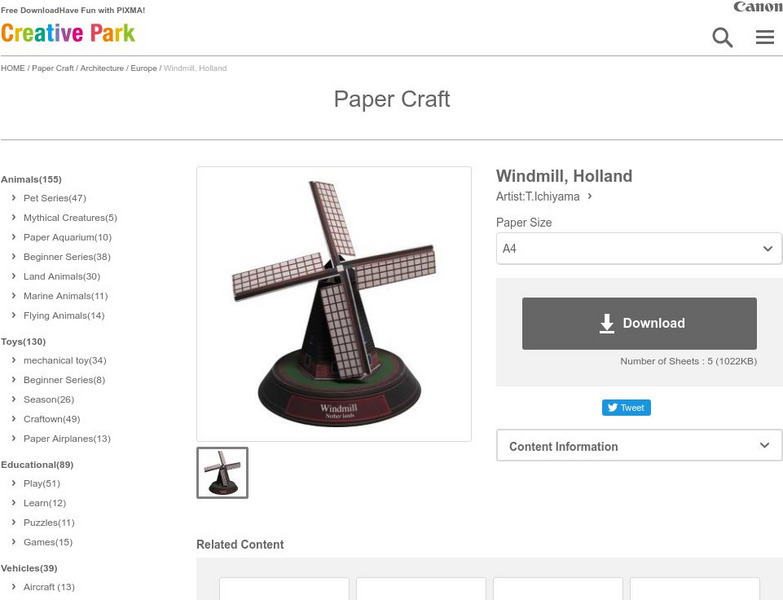Hi, what do you want to do?
Curated OER
Robots from Junk
Students create balloon and rubber band models of robotic rovers to investigate the concepts of mass, torque, and friction. Through research and planning, students construct a rover test-bed that simulates the Martian environment.
Curated OER
Future Conditional
Students examine how toxic pollutants affect environmental and human health. They define key terms, watch a video, and answer discussion questions.
Curated OER
Energy: The Big Picture
Students research about energy related topics. In this earth science lesson, students discuss ways to save energy. They create a presentation about their research and share it with the class.
Curated OER
Unplugged!
Learners consider several things: the importance of electricity and energy in their lives, the costs of that energy, and the importance of conserving energy.
National Geographic
National Geographic: Stakeholder Debate: Wind Energy
Using a case study of the Cape Wind Project in Nantucket Sound, students examine the various points of view of stakeholders, and hold a debate to argue about the pros and cons of this wind energy project. Includes handouts for...
Discovery Education
Discovery Education: Science of Everyday Life: 3 M Wind Energy Virtual Lab
Do you think you can design a wind turbine that supplies energy to 400 homes at the highest efficiency and lowest cost? Try your hand at turbine design in this interactive activity that allows you design, build, and test a device to...
State Energy Conservation Office-Texas
State Energy Conservation Office: Wind Power Basics [Pdf]
A mini-unit on wind energy. Students first read a passage about wind energy, and respond to comprehension questions. They then do a lab activity where they build and test a windmill to see how design and placement of the windmill affect...
Practical Action
Practical Action: Wind Power Challenge
In this unit, students explore how life for people in the rural mountainous regions of Peru is different as they live without access to electricity. They learn how small-scale wind turbines have changed people's lives, as with a supply...
TeachEngineering
Teach Engineering: Windmill of Your Mind: Distributed Energy Goes to School
Students research the feasibility of installing a wind-turbine distributed energy (DE) system for their school. They write a proposal (actually, the executive summary of a proposal) to the school principal based on their findings and...
Museum of Science
Museum of Science and Industry: Online Science: Activities: Build a Wind Turbine
Step-by-step instructions, with photos, of how to construct and test a wind turbine that produces energy. This experiment does require preparation as it uses PVC pipes, a small motor, and a multimeter, for example.
TeachEngineering
Teach Engineering: Wind Power!
Students learn how engineers transform wind energy into electrical energy by building their own miniature wind turbines and measuring the electrical current it produces. They explore how design and position affect the electrical energy...
Concord Consortium
Concord Consortium: Stem Resources: Wind Generator
Using a voltage sensor, students will measure how much "electricity" is produced by the wind turbine that they design and build. Students will experiment with blade designs to see which one collects energy from the wind the most...
TeachEngineering
Teach Engineering: Renewable Energy Living Lab: Power Your School
Students use real-world data to calculate the potential for solar and wind energy generation at their school location. After examining maps and analyzing data from the online Renewable Energy Living Lab, they write recommendations as to...
TeachEngineering
Teach Engineering: Wind Energy
Students learn about wind energy by making a pinwheel to model a wind turbine. Just like engineers, they decide where and how their turbine works best by testing it in different areas of the playground.
Next.cc
Next: Wind Power
Engage in the activities provided to learn how the wind is an important source of energy. Click on the links for further exploration
TeachEngineering
Teach Engineering: Power Your House With Wind
Students learn how engineers harness the energy of the wind to produce power by following the engineering design process as they prototype two types of wind turbines and test to see which works best. Students also learn how engineers...
TeachEngineering
Teach Engineering: Wind Power
In this activity, students develop an understanding of how engineers use wind to generate electricity. They will build a model anemometer to better understand and measure wind speed.
Climate Literacy
Clean: Wind Energy Using Google Earth
In this activity students will use Google Earth to investigate ideal features of wind farms and they will use the Google Earth measurement tool to determine the estimated perimeter of each wind farm.
Other
Siemens Science Day: Physical Science: Blowin' in the Wind
Students will create their own windmill and learn how to use the most efficient design by testing theirs against their classmates' projects.
Other
Kid Wind Project: Teacher Resources
A collection of inquiry-based and hands-on activities to introduce students to wind energy. Includes PowerPoints, labs, and videos.
Other
Canon 3 D Paper Craft Buildings: Windmill
Intricately detailed paper-folding activity that provides templates and instructions for building a three-dimensional paper model of a windmill. Instructions require download.
National Geographic
National Geographic: Energy Solutions: Tapping Into Topography of Lake Turkana
In this lesson, students read and analyze articles about the alkaline water in Lake Turkana in Kenya, and about a wind energy project near Lake Turkana. They then examine the many factors that must be considered when undertaking this...
PBS
Pbs Learning Media: Off the Grid
This interactive activity produced for Teachers' Domain presents users with three hypothetical scenarios in which they are challenged to design a wind power system that will meet their electrical needs.
Science Education Resource Center at Carleton College
Serc: How Wind Affects Various Objects
In this activity, students experiment with various objects in a wind tunnel. Together, they record predictions and data in a class data table. Students will then use the information gained in the experiment to draw conclusions about the...











![State Energy Conservation Office: Wind Power Basics [Pdf] Lesson Plan State Energy Conservation Office: Wind Power Basics [Pdf] Lesson Plan](https://static.lp.lexp.cloud/images/attachment_defaults/resource/large/FPO-knovation.png)

